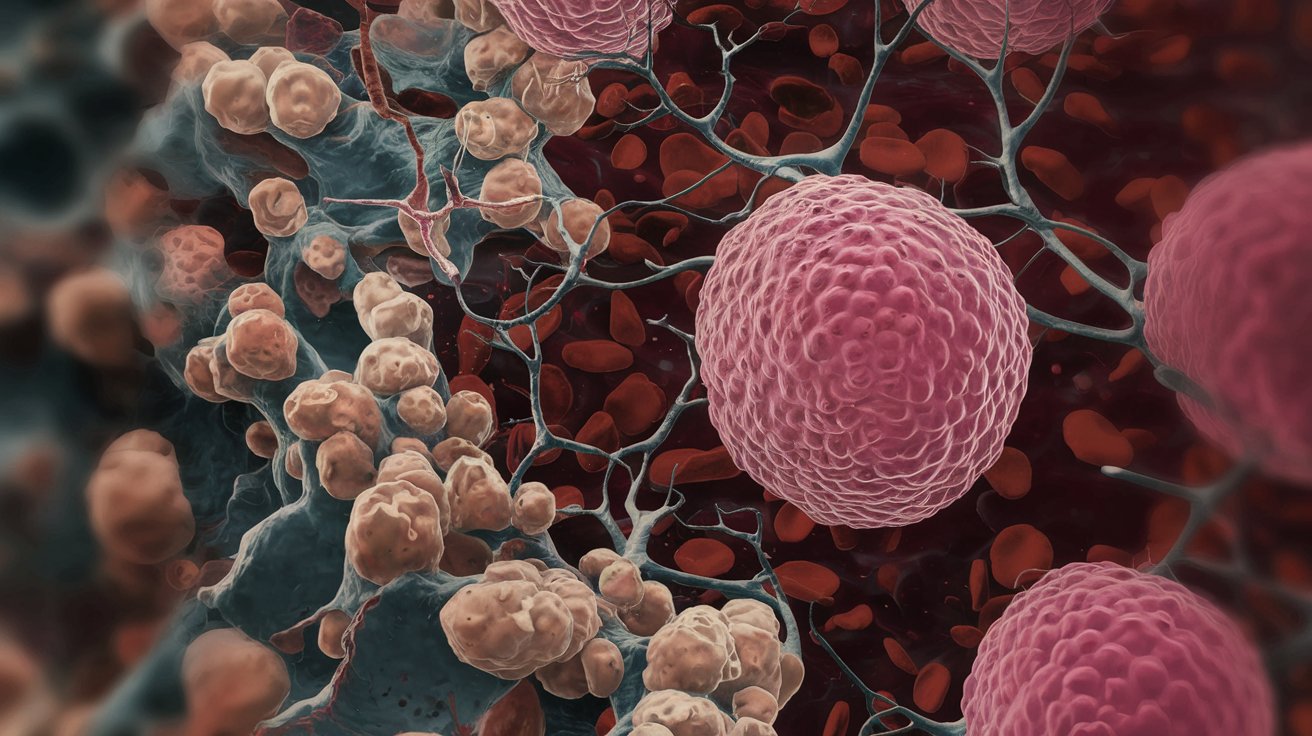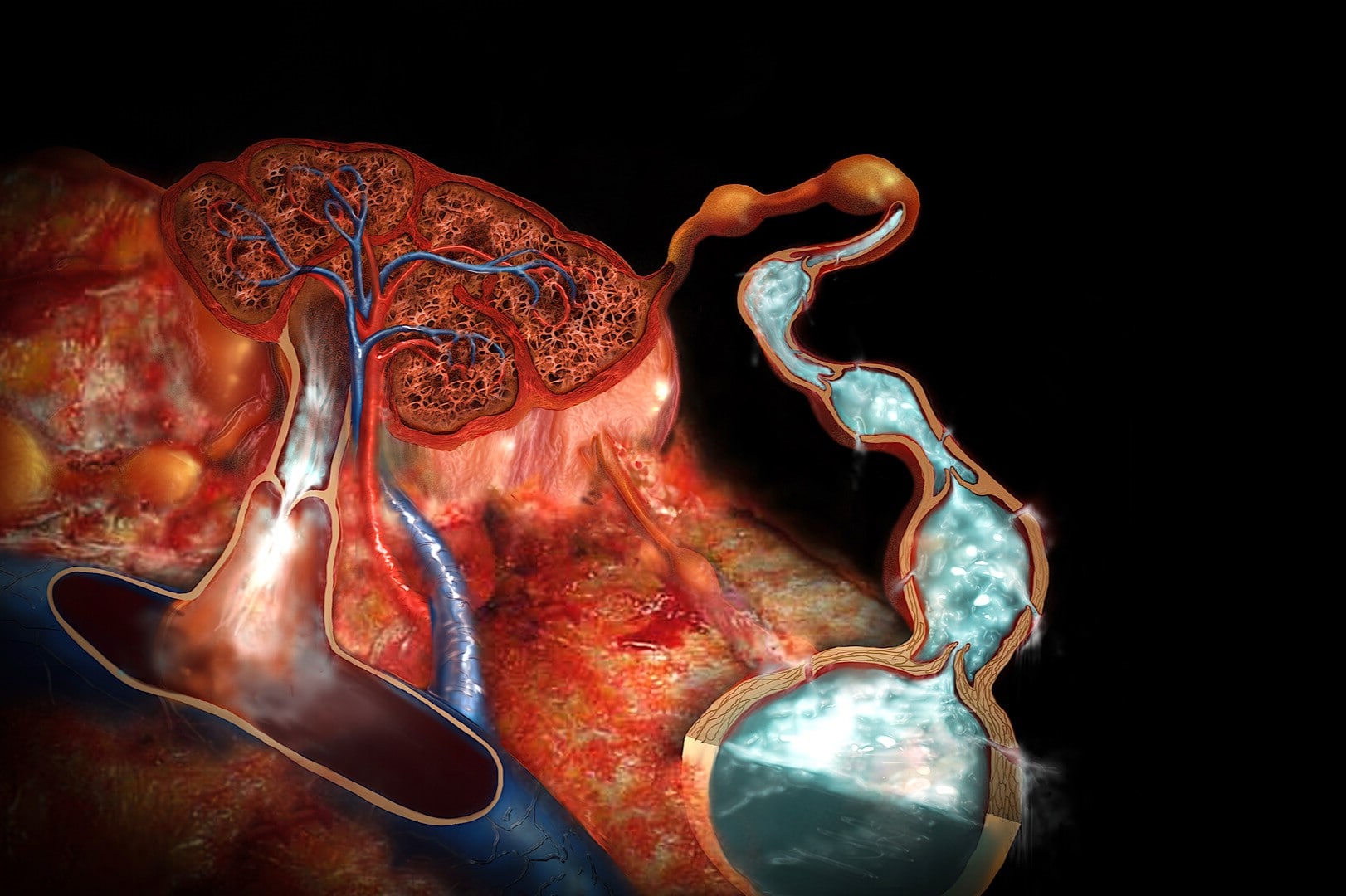
What is Choriocarcinoma? Choriocarcinoma is a rare, aggressive cancer that originates from the placenta's trophoblastic cells. It can develop after any type of pregnancy, including a molar pregnancy, miscarriage, or full-term birth. This malignancy spreads quickly through the bloodstream, often reaching organs like the lungs, liver, and brain. Early symptoms might include unusual vaginal bleeding, abdominal pain, and shortness of breath. Diagnosing choriocarcinoma involves measuring elevated levels of beta-human chorionic gonadotropin (β-hCG) and imaging studies. Treatment usually includes chemotherapy, surgery, and sometimes radiation. Early detection and aggressive treatment are crucial for improving survival rates.
Key Takeaways:
- Choriocarcinoma is a rare and aggressive cancer that can occur in both men and women, often following pregnancy. Early detection and aggressive treatment are crucial for better outcomes.
- Understanding the risk factors and symptoms of choriocarcinoma can help in early detection and prevention. Further research is needed to develop more effective treatments.
What is Choriocarcinoma?
Choriocarcinoma is a rare and aggressive cancer that originates from the placenta's trophoblastic cells. It can occur in both men and women, though it's more common in women following pregnancy. Let's dive into some key facts about this disease.
-
Definition and Classification: Choriocarcinoma is a malignant tumor arising from the trophoblastic epithelium of the placenta. It is classified into gestational and non-gestational types.
-
Etiology: The exact cause is not fully understood, but it often follows a molar pregnancy, miscarriage, or full-term pregnancy.
-
Epidemiology: This cancer is extremely rare, with varying incidence rates globally. It's more common in Southeast Asia and Japan than in Europe and North America.
-
Risk Factors: A history of hydatidiform mole, maternal age (teenage mothers and those over 35), long-term oral contraceptive use, and blood type A increase the risk.
How Does Choriocarcinoma Develop?
Understanding the pathophysiology and clinical presentation helps in early detection and treatment.
-
Pathophysiology: It mimics placental tissue development and spreads early through the bloodstream to organs like the lungs, liver, and brain.
-
Clinical Presentation: Symptoms include vaginal bleeding, abdominal pain, weight loss, fatigue, and shortness of breath.
-
Diagnosis: Diagnosis involves elevated β-hCG levels, imaging studies like ultrasound and CT scans, and histopathological examination.
-
Staging: The disease is staged from I to IV, with Stage I confined to the uterus and Stage IV involving other metastatic sites.
Treatment Options for Choriocarcinoma
Treatment varies based on the stage and extent of the disease. Early intervention is crucial for better outcomes.
-
Chemotherapy: Combination chemotherapy with drugs like methotrexate, etoposide, and actinomycin D is the primary treatment for metastatic disease.
-
Surgery: Radical surgery may be necessary for localized disease or to remove metastatic lesions.
-
Radiation Therapy: Sometimes used to control symptoms or treat localized disease.
-
Prognosis: Prognosis is generally poor, especially in advanced cases. Early detection and aggressive treatment can improve survival rates.
Choriocarcinoma in Males
Though rare, choriocarcinoma can also occur in males, typically affecting the testicles.
-
Risk Factors in Males: Cryptorchidism (undescended testes) and genetic changes in the 12p11.2-p12.1 chromosomal region increase the risk.
-
Testicular Choriocarcinoma: This aggressive form of testicular cancer metastasizes early to organs like the lungs, liver, and brain.
-
Laboratory Studies: Marked elevation in β-hCG levels is characteristic and aids in diagnosis.
-
Surgical Management: Radical orchiectomy is usually performed for tissue diagnosis.
Genetic and Environmental Factors
Several genetic and environmental factors can influence the development of choriocarcinoma.
-
Genetic Changes: Amplifications and deletions in the 12p11.2-p12.1 chromosomal region are common in testicular choriocarcinoma.
-
Maternal Estrogen Exposure: Exposure to maternal estrogen during fetal development may increase the risk.
-
Descriptive Epidemiology: Incidence rates are highest in parts of Asia and among American Indians and Inuits in Canada and Greenland.
-
Geographic Variation: The highest incidence rates are in Southeast Asia and Japan, while the lowest are in Europe and North America.
Demographic Patterns and Risk Factors
Understanding who is most at risk can help in early detection and prevention.
-
Age: Predominantly affects women of childbearing age and men between 20 to 30 years old.
-
Oral Contraceptive Use: Long-term use has been linked to an increased risk.
-
Diet: Dietary factors do not significantly influence the incidence.
-
Infection: Infections are not a significant risk factor.
-
Smoking and Alcohol: These habits do not significantly influence the incidence.
Host and Hormonal Factors
Host and hormonal factors play a significant role in the development of choriocarcinoma.
-
Host Factors: Genetic and familial factors are significant in the development.
-
Immune Function: A compromised immune system may increase the risk of other cancers, though not specifically choriocarcinoma.
-
Antecedent Pregnancy: A history of hydatidiform mole is the most common precursor.
-
Endogenous Hormonal Factors: Maternal estrogen exposure during fetal development may contribute to the risk.
Associated Cancers and Prevention
Choriocarcinoma is associated with other gestational trophoblastic diseases. Early detection and treatment are key.
-
Associated Cancers: Includes complete and partial hydatidiform mole, invasive mole, and placental site and epithelioid trophoblastic tumors.
-
Opportunities for Prevention: Regular gynecological check-ups and awareness of risk factors can help in early detection.
-
Future Research: Focus on understanding molecular mechanisms and developing more effective treatments.
Conclusion
Choriocarcinoma is a rare and aggressive cancer with significant risk factors. Early detection and aggressive treatment are crucial for improving outcomes. Further research is needed to understand the disease better and develop targeted therapies.
-
References: Comprehensive literature on epidemiology, pathophysiology, clinical presentation, diagnosis, treatment options, and prognosis.
-
Classification of Choriocarcinoma: Gestational and non-gestational types.
-
Histopathology and Diagnosis: Histopathological examination and elevated β-hCG levels are diagnostic.
-
Genetic Predictors: Certain genetic mutations may predispose individuals to developing choriocarcinoma.
-
Demographic Patterns: Predominantly affects women of childbearing age and men between 20 to 30 years old.
-
Incidence in the United States: Relatively low incidence rates, but early detection and treatment have improved outcomes.
-
Mortality and Survival: High mortality rates, especially in advanced cases. Long-term survival is rare.
-
International Patterns: Significant geographic variation in incidence rates.
-
Race and Ethnicity: More common among Asian, American Indian, and African American populations.
-
Socioeconomic Status: Does not significantly influence incidence, but access to healthcare and early detection may vary.
-
Environmental Factors: Oral contraceptive use does not significantly influence incidence.
-
Oral Contraceptive Use: Linked to an increased risk of developing choriocarcinoma.
-
Diet and Nutrition: Dietary factors do not significantly influence incidence.
-
Future Directions: Developing more effective treatments and improving early detection techniques.
-
Genetic Changes: Amplifications and deletions in the 12p11.2-p12.1 chromosomal region are common in testicular choriocarcinoma.
-
Maternal Estrogen Exposure: Exposure during fetal development may increase the risk.
-
Descriptive Epidemiology: Highest incidence rates in parts of Asia and among American Indians and Inuits.
-
Geographic Variation: Highest incidence rates in Southeast Asia and Japan, lowest in Europe and North America.
Final Thoughts on Choriocarcinoma
Choriocarcinoma is a rare but aggressive cancer originating from the placenta's trophoblastic cells. It can develop after any type of pregnancy, including molar pregnancies, miscarriages, or full-term deliveries. Early detection is crucial since the disease spreads quickly to organs like the lungs, liver, and brain. Key symptoms include abnormal vaginal bleeding, abdominal pain, and elevated β-hCG levels. Treatment often involves chemotherapy, surgery, and sometimes radiation. Despite its severity, advancements in medical treatments have improved outcomes for many patients. Understanding risk factors, such as a history of hydatidiform mole or maternal age, can aid in early diagnosis and treatment. Continued research is essential for developing more effective therapies and improving survival rates. Stay informed and proactive about health to catch potential issues early.
Frequently Asked Questions
Was this page helpful?
Our commitment to delivering trustworthy and engaging content is at the heart of what we do. Each fact on our site is contributed by real users like you, bringing a wealth of diverse insights and information. To ensure the highest standards of accuracy and reliability, our dedicated editors meticulously review each submission. This process guarantees that the facts we share are not only fascinating but also credible. Trust in our commitment to quality and authenticity as you explore and learn with us.


